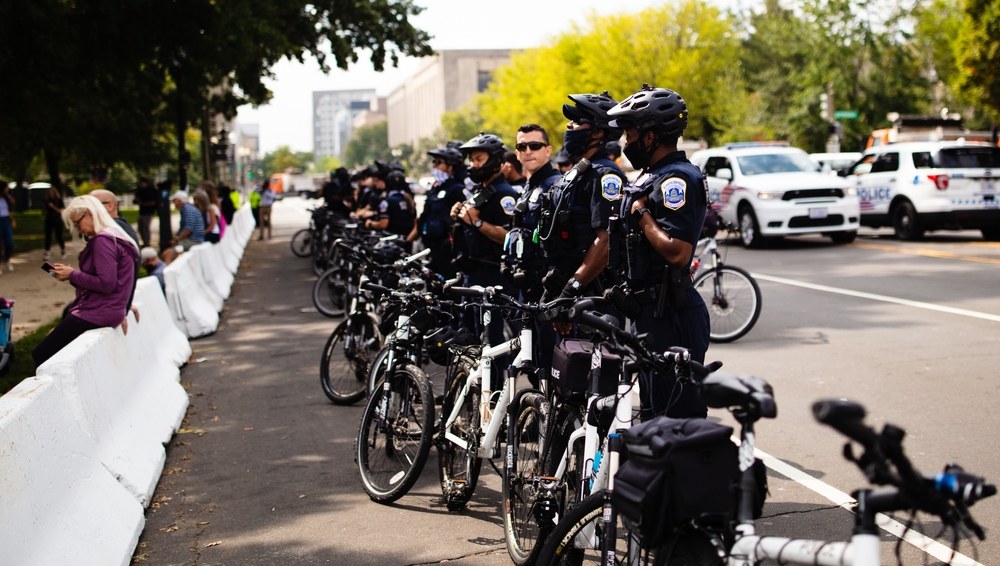Strikes, whether due to labor disputes, political reasons, or other causes, can significantly disrupt daily life, posing serious security risks to businesses, communities, and public infrastructure. The need for emergency strike security services is paramount in maintaining order, protecting assets, and ensuring the safety of individuals during these volatile periods. This blog explores the importance of immediate and emergency security services during unexpected strikes, highlighting key strategies and considerations for businesses and organizations.
Understanding the Nature of Strikes
Strikes are typically organized efforts by employees to protest against working conditions, wages, or other employment-related issues. However, they can also be driven by political motivations or other social causes. The unpredictable nature of strikes can lead to significant challenges for security management, requiring rapid response and strategic planning.
The Impact of Strikes on Security
Strikes can lead to various security challenges, including:
- Violence and Vandalism: Protests can escalate into violent confrontations, leading to property damage and personal injuries.
- Business Disruption: Strikes can halt operations, leading to financial losses and operational setbacks.
- Public Safety Risks: Large gatherings can pose risks to public safety, including traffic disruptions and increased likelihood of accidents.
- Threats to Critical Infrastructure: Strikes can target critical infrastructure such as transportation, healthcare, and utilities, amplifying the risk of widespread disruption.
The Role of Emergency Strike Security Services
Emergency strike security services play a crucial role in mitigating the risks associated with strikes. These services are designed to provide rapid and effective response to ensure safety and minimize disruption. Key components of emergency strike security include:
- Risk Assessment and Planning
- Conducting thorough risk assessments to identify potential threats and vulnerabilities.
- Developing comprehensive security plans tailored to the specific needs of the organization and the nature of the strike.
- Rapid Deployment of Security Personnel
- Mobilizing trained security personnel quickly to areas affected by the strike.
- Ensuring that security teams are equipped with the necessary tools and resources to handle various scenarios.
- Crowd Control and Management
- Implementing strategies to manage large crowds and prevent the escalation of violence.
- Utilizing barriers, surveillance systems, and communication tools to monitor and control the situation.
- Protection of Assets and Infrastructure
- Securing critical infrastructure and assets to prevent damage and theft.
- Implementing access control measures to restrict entry to sensitive areas.
- Communication and Coordination
- Establishing clear communication channels between security teams, management, and law enforcement.
- Coordinating with local authorities to ensure a unified response to the strike.
- Crisis Management and Incident Response
- Developing crisis management protocols to address various emergency scenarios.
- Training security personnel in incident response and de-escalation techniques.
Strategies for Businesses and Organizations
To effectively manage security during unexpected strikes, businesses and organizations should consider the following strategies:
- Proactive Security Planning
- Develop and regularly update security plans that include specific protocols for strike scenarios.
- Conduct regular training sessions for employees and security personnel on strike management and emergency response.
- Engage Professional Security Services
- Partner with reputable security firms that specialize in emergency strike security.
- Ensure that security providers have the expertise and resources to handle the unique challenges posed by strikes.
- Strengthen Communication and Coordination
- Establish clear communication protocols to ensure timely information sharing between all stakeholders.
- Coordinate with local law enforcement and emergency services to align response efforts.
- Invest in Security Technology
- Utilize advanced security technologies such as surveillance cameras, access control systems, and crowd management tools.
- Implement real-time monitoring and analytics to enhance situational awareness and response capabilities.
- Legal and Compliance Considerations
- Ensure compliance with all relevant laws and regulations related to labor strikes and security measures.
- Engage legal counsel to navigate the complexities of labor disputes and strike management.

Building a Resilient Security Framework
To effectively respond to the sudden onset of strikes, businesses and organizations must build a resilient security framework. This involves several key elements:
1. Scenario Planning and Simulation Exercises
Scenario planning involves creating hypothetical strike situations to test the organization’s readiness and response capabilities. Simulation exercises, often conducted in collaboration with professional security services, help in:
- Evaluating the effectiveness of existing security measures.
- Identifying gaps and areas for improvement.
- Training staff on their roles and responsibilities during a strike.
These exercises should be conducted regularly to ensure that the security framework remains robust and adaptive to new threats.
2. Integrated Security Solutions
Integrating various security solutions enhances the ability to manage complex strike scenarios effectively. Key components include:
- Physical security measures such as barriers, locks, and surveillance systems.
- Cybersecurity protocols to protect against digital threats that could accompany physical strikes.
- Communication systems to ensure seamless information flow between security personnel, management, and external stakeholders.
An integrated approach ensures comprehensive protection and quick response capabilities.
Related: Behind the Picket Line
The Role of Technology in Emergency Strike Security
Advancements in technology have significantly enhanced the ability to manage and respond to strikes. Leveraging the right technologies can make a critical difference in maintaining security and order.
1. Surveillance and Monitoring Systems
High-definition cameras, drones, and advanced monitoring systems provide real-time visibility into strike activities. These systems help in:
- Identifying and assessing the scale of the strike.
- Monitoring crowd movements and identifying potential threats.
- Recording incidents for later analysis and legal purposes.
Integrating these systems with artificial intelligence (AI) can further enhance their capabilities, enabling automated threat detection and response.
2. Access Control Systems
During a strike, controlling access to sensitive areas is crucial to prevent unauthorized entry and protect assets. Modern access control systems include:
- Biometric scanners and smart card systems.
- Remote access management, allowing security teams to lock down facilities from a central control room.
- Visitor management systems to track and manage individuals entering and exiting the premises.
These systems help in maintaining a secure environment, even in the midst of chaos.
3. Communication and Coordination Tools
Effective communication is the backbone of any emergency response. Advanced communication tools include:
- Encrypted radios and mobile applications for secure communication between security personnel.
- Mass notification systems to quickly disseminate information to all employees.
- Incident management software to track and coordinate response activities in real-time.
These tools ensure that everyone is informed and can act swiftly to address emerging threats.
Legal and Ethical Considerations
Managing security during strikes involves navigating various legal and ethical considerations. Ensuring compliance with laws and regulations while respecting the rights of strikers is essential for maintaining legitimacy and avoiding legal repercussions.
1. Understanding Labor Laws
Organizations must be well-versed in labor laws and regulations that govern strikes and security measures. Key aspects include:
- The legal rights of workers to strike.
- Restrictions on the use of force and surveillance.
- Requirements for notifying authorities and obtaining permits for certain security measures.
Compliance with these laws helps in avoiding legal disputes and maintaining a positive reputation.
2. Balancing Security and Privacy
While ensuring security is paramount, organizations must also respect the privacy rights of employees and strikers. This involves:
- Implementing surveillance measures that are proportionate and necessary.
- Ensuring that any data collected during surveillance is stored securely and used appropriately.
- Providing transparency about security measures and their purposes.
Balancing these considerations helps in building trust and avoiding ethical breaches.
3. Engaging with Stakeholders
Effective strike management involves engaging with various stakeholders, including:
- Employees and their representatives.
- Local authorities and law enforcement.
- The broader community affected by the strike.
Open communication and collaboration with these stakeholders can help in resolving disputes amicably and minimizing the impact of the strike.
Related: Understanding the Need for Strike Response Teams
Psychological Support and De-escalation Tactics
Strikes can be stressful and emotionally charged situations. Providing psychological support and employing de-escalation tactics are critical for maintaining calm and preventing violence.
1. Employee Assistance Programs
Offering support to employees affected by the strike can help in:
- Reducing anxiety and stress.
- Providing counseling and mental health services.
- Offering financial assistance or other resources to those in need.
These programs demonstrate a commitment to employee well-being and can help in mitigating the negative impact of the strike.
2. De-escalation Training
Training security personnel in de-escalation techniques is essential for managing confrontations without resorting to force. Key tactics include:
- Active listening and empathy to understand the concerns of strikers.
- Non-threatening body language and communication techniques.
- Conflict resolution strategies to address issues peacefully.
These skills help in reducing tensions and maintaining a peaceful environment.
Preparing for Post-Strike Recovery
Once a strike is resolved, the focus shifts to recovery and resuming normal operations. Effective post-strike recovery involves several steps:
1. Assessing the Impact
Conducting a thorough assessment of the strike’s impact helps in understanding the extent of damage and disruption. This includes:
- Evaluating physical damage to property and infrastructure.
- Assessing financial losses and operational disruptions.
- Gathering feedback from employees and stakeholders.
This assessment provides valuable insights for future preparedness.
2. Implementing Lessons Learned
Learning from the strike experience is crucial for improving future security measures. Key steps include:
- Reviewing the effectiveness of the security response.
- Identifying areas for improvement and updating security plans.
- Conducting debrief sessions with security personnel and management.
Implementing these lessons ensures continuous improvement in strike management.
3. Supporting Employee Reintegration
Helping employees reintegrate into the workplace after a strike is essential for restoring normalcy. This involves:
- Providing support and resources to address any lingering concerns or grievances.
- Offering training or counseling to help employees readjust.
- Communicating transparently about any changes or new measures implemented post-strike.
A smooth reintegration process helps in rebuilding trust and morale within the organization.
Emergency strike security services are essential for managing the risks associated with unexpected strikes. By adopting proactive security measures, engaging professional services, and leveraging advanced technologies, businesses and organizations can effectively protect their assets, ensure the safety of their employees, and maintain operational continuity during these challenging periods. The unpredictable nature of strikes necessitates a strategic and well-coordinated approach to security, highlighting the importance of preparedness and rapid response.









